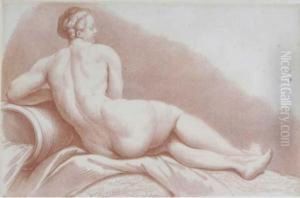Louis Francois Roubillac Paintings
Louis Francois Roubillac, often anglicized as Louis-François Roubiliac, was a French sculptor who became one of the leading artists in England during the 18th century. Born in 1695 in Lyon, France, Roubillac's early life is not as well documented as his later career. However, it is known that he studied in Dresden and Rome before establishing himself in London.
In London, Roubillac quickly gained a reputation for his skill and artistic flair. His works were characterized by their dynamic movement and expressive detail, which stood in contrast to the more reserved and classical approach that was typical in England at the time. He became particularly noted for his portrait busts and funerary monuments.
Among Roubillac's most celebrated works is the monument to the Duke of Argyle in Westminster Abbey (1749), which showcased his talent for capturing the vigor and personality of his subjects. Another significant work is the statue of Handel in Vauxhall Gardens (1738), which exemplifies his adeptness at incorporating a sense of life and character into his subjects. Roubillac's sculptures can be found in many prominent locations, including Westminster Abbey and Trinity College, Cambridge.
Roubillac's impact on English sculpture was significant, marking a move away from the staid baroque style towards a more rococo and eventually neoclassical aesthetic. His works are considered some of the finest examples of mid-18th-century sculpture in England. Roubillac's career in London flourished until his death in 1762, and his legacy as one of England's foremost sculptors of the period continues to be celebrated today.
